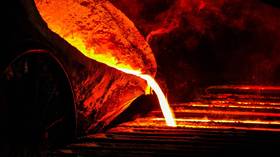Russia looks to become leader in hydrogen tech

Russia's vast natural gas reserves and renewables potential could make it one of the world's largest hydrogen producers within the next decades.
Russia’s mineral and energy wealth has given it a second chance in global affairs after the Cold War and the implosion of the Soviet Union. Oil and gas exports have provided the necessary income to rebuild the country and exert influence abroad. The energy transition is the ‘Sword of Damocles’ hanging over the Russian fossil fuel industry. Moscow, therefore, is trying to find a new purpose for its energy industry by early investments in hydrogen technologies.
Russia’s energy ministry is working on a hydrogen strategy in cooperation with foreign partners in Japan and Germany. The tools for this transformation are the country’s energy titans Rosatom, Novatek, and Gazprom. Each of these companies, with the support of Moscow, is looking into different technologies to produce and export the hydrogen.
According to deputy prime minister Alexander Novak, “experts say that hydrogen may constitute 7 to 25 percent of the global energy balance by 2050, as soon as the issues of high production costs and the challenges related to transportation are resolved.”
To develop a hydrogen sector, Russia intends to use the assets it already possesses such as the world's largest natural gas reserves, strong nuclear know-how, and high-class energy research facilities. The country’s energy mix is a reflection of the current state of affairs.
Russia has one of the world’s largest nuclear plant fleets which is built and operated by state-owned Rosatom. A significant order portfolio for new plants both domestically and abroad is an incentive to develop and improve existing technologies. Therefore, nuclear energy is seen as an asset which through the process of electrolysis could be used to produce ‘yellow’ hydrogen.
Russian and Japanese officials and representatives of their respective industries are already in talks for cooperation opportunities. In this regard, Rosatom and Japan’s Kawasaki Heavy Industries intend to export the first shipment by 2024. The Japanese intend to expand their knowledge of the industry and build on the experience of importing hydrogen from their enterprise in Australia that will start operations in 2021.
Also on rt.com Russia’s latest & most powerful nuclear icebreaker sets off on maiden Arctic voyageFurthermore, Novatek, Russia’s largest independent gas producer, is already looking for new opportunities to supplement its LNG activities. According to CEO Leonid Mikhelson, the company is planning to build steam-methane reforming facilities on the Yamal peninsula to produce hydrogen. Additional carbon capture and storage projects will be required to produce so-called ‘blue’ hydrogen and meet the necessary standards. Mikhelson expects hydrogen to represent “a noticeable share in global energy consumption between 30 and 40 years from today.”
Russia’s unchallenged gas champion Gazprom, however, is pursuing a different path. The company already operates extensive pipeline infrastructure to Europe and is expanding capacity to China. Due to the lifetime of the pipelines, hydrogen could be used to extend operations well after natural gas has been phased out. Before pure hydrogen can be pumped, admixing is a good alternative to reduce the carbon footprint and meet the requirements of customers.
The technology Gazprom is looking into, however, is a process called methane pyrolysis. For this technique, natural gas is still used as the starting point of the process but the byproduct is different from methane reforming. By using heat, natural gas molecules are broken down into hydrogen and carbon which is not gaseous but solid. The carbon then can be used for other industrial processes and increase the value of the process.
Lastly, while renewables are not a big part of Russia's energy mix and the government hasn't announced ambitious plans, there is a bright future for wind in the country. Especially the coastal regions in the northwest are highly suitable for ‘green’ hydrogen production through electrolysis. The existing natural gas pipelines could be reused to pump hydrogen to consumers.
Despite the potential and intentions to become a hydrogen exporter, there is a very long way to go. Russia is one of the country’s most seriously affected by the energy transition due to its sizeable fossil fuel exports. Moscow realizes, therefore, that the current modus operandi is not sustainable. The current hydrogen plans are imperative to diversify the economy and develop new industries.
This article was originally published on Oilprice.com
















